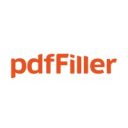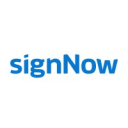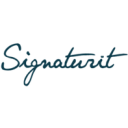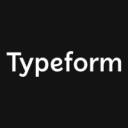DocuSign vs Jotform: Which digital solution fits your business better?
- 01DocuSign vs Jotform: overview
- 02What's the difference between DocuSign and Jotform?
- 03DocuSign pros and cons
- 04Jotform pros and cons
- 05DocuSign compared to Jotform
- 06Jotform compared to DocuSign
- 07Features comparison
- 08DocuSign vs Jotform: Which is the best for your business?
- 09Promotions on Digital Signature software
- 10Alternatives to DocuSign & Jotform
Save up to $294 on Jotform
Save up to $294 on Jotform
For most businesses, streamlining workflows and managing documents efficiently is essential. Fortunately, there are various digital solutions available that make it easier to collect, manage, and sign documents electronically. These tools are invaluable for improving operational efficiency and enhancing the customer experience.
Among these options, DocuSign and Jotform are standout platforms, trusted by businesses of all sizes. Both platforms offer robust features for handling digital forms and e-signatures, but they differ in functionality and specialization. To help you determine which platform is the best fit for your business, we've created an in-depth comparison of their features, strengths, and potential drawbacks.
DocuSign vs Jotform: overview
DocuSign and Jotform are two leading platforms in digital document management and electronic signatures software, each offering distinct features to meet various business requirements.
DocuSign is widely recognized for its powerful e-signature capabilities. It provides a comprehensive solution for businesses needing secure, legally-binding signatures and advanced document tracking. On the other hand, Jotform excels as a form-building platform with integrated e-signature functionality. While its e-signature capabilities are more lightweight compared to DocuSign, Jotform shines when it comes to creating custom online forms, surveys, and data collection tools.
Now, let’s explore the DocuSign vs. Jotform comparison in detail to help you decide which platform best suits your specific document management and e-signature needs.
What's the difference between DocuSign and Jotform?
DocuSign and Jotform both provide essential tools for managing digital documents and collecting e-signatures, but their core focuses and feature sets differ significantly. Understanding these differences is crucial for businesses deciding which platform best suits their needs.
DocuSign is primarily designed for handling secure, legally-binding electronic signatures. It specializes in providing robust, compliant solutions for industries like finance, real estate, and healthcare, where document security and regulatory compliance are critical. DocuSign offers a comprehensive set of features, including advanced workflow automation, real-time tracking of document status, and integrations with many enterprise software platforms. Its focus on signature security, audit trails, and compliance makes it ideal for businesses that require highly secure document management.
On the other hand, Jotform is a versatile form-building tool with integrated e-signature functionality. While it also offers the ability to collect signatures, Jotform’s strength lies in its flexibility to create custom forms, surveys, and data collection tools. Its drag-and-drop interface is easy to use, making it an excellent choice for businesses looking to create customized online forms that go beyond simple e-signature needs. Jotform is ideal for organizations that need to collect data, registrations, or feedback while also gathering signatures as part of the process.
A key difference between the two is the level of specialization. DocuSign excels in document management and secure signing workflows, while Jotform’s broader capabilities focus on customizable forms, with signatures being one of many potential form elements.
Pricing structures also differ. DocuSign typically operates on a per-user or per-envelope basis, while Jotform's pricing is based on form submissions, offering more flexibility for businesses that need form functionality beyond e-signatures. Choosing between DocuSign and Jotform depends largely on whether your priority is advanced e-signature security or versatile form-building.
50% off annual plans for 1 year on Jotform
Get 50% off annual plans for 1 year on Jotform and up to $294 savings with Secret.
DocuSign pros and cons
What are the advantages of DocuSign?
- Legally binding and secure: DocuSign provides legally-binding electronic signatures that comply with major e-signature laws, such as the ESIGN Act in the U.S. and eIDAS in Europe. It ensures high levels of security with encryption and a complete audit trail.
- Advanced workflow automation: It supports complex document workflows, including multi-step approvals, conditional routing, and automatic reminders, making it ideal for large organizations with heavy documentation needs.
- Integration with popular platforms: DocuSign integrates seamlessly with many popular business applications, such as Salesforce, Microsoft 365, Google Drive, and more, streamlining document management across systems.
- Mobile-friendly: DocuSign offers a highly functional mobile app that enables users to send, sign, and manage documents on the go, which is particularly useful for professionals working remotely or in the field.
- Audit trails and compliance: It provides a detailed audit trail for every document, tracking who signed it, when it was signed, and from which IP address. This is crucial for industries with strict compliance requirements.
What are the disadvantages of DocuSign?
- Higher cost for advanced features: DocuSign can be more expensive than some competitors, especially when you need access to advanced features like bulk sending, advanced reporting, or custom branding.
- Learning curve for complex workflows: While DocuSign is user-friendly for simple tasks, setting up advanced workflows or integrating it with other systems can be complex and may require training or technical assistance.
- Limited customization options: Compared to more customizable platforms, the level of personalization and branding within the documents and forms is somewhat limited without upgrading to higher-tier plans.
- Envelope-based pricing model: DocuSign’s pricing is often based on the number of "envelopes" (document sets) sent per month, which can become restrictive or costly for businesses with high volume needs.
- Limited native form-building features: While excellent for signatures and document routing, DocuSign doesn’t have robust form-building capabilities. Businesses needing complex forms may need additional tools or integrations.
Compare DocuSign to other tools
Jotform pros and cons
What are the advantages of Jotform?
- User-friendly interface: Jotform offers a drag-and-drop form builder that is intuitive and easy to use, even for those with little to no technical experience. This makes it simple to create custom forms quickly.
- Highly customizable forms: Jotform allows for a high level of customization. Users can design forms with different layouts, widgets, and integrations, allowing you to tailor forms exactly to your business needs.
- Wide range of templates: Jotform offers thousands of pre-made templates for various industries and use cases, including registration forms, surveys, order forms, and more. This helps users get started quickly without having to build forms from scratch.
- Affordable pricing with free tier: Jotform offers a generous free tier that allows users to create up to 5 forms with 100 submissions per month. This makes it accessible for small businesses or startups with limited budgets.
- Integration with other tools: Jotform integrates with many third-party applications, including Google Drive, PayPal, Dropbox, Salesforce, and more, making it easy to automate workflows and sync data between platforms.
What are the disadvantages of Jotform?
- Limited e-signature features: While Jotform supports electronic signatures, its e-signature capabilities are more basic compared to dedicated e-signature platforms like DocuSign, making it less ideal for businesses that need advanced e-signature workflows.
- Storage and submission limits: On the lower-tier plans, Jotform limits the number of form submissions, storage, and users. For businesses with high-volume needs, the costs can escalate as you upgrade plans to increase these limits.
- Less focus on security: While Jotform offers SSL encryption, its security features are not as robust as platforms like DocuSign, which provide more advanced audit trails, authentication options, and compliance for legal documents.
- Form loading speeds: Some users have reported that forms created with Jotform can take longer to load, especially if they are heavily customized or include many widgets, which may affect the user experience.
- Customer support limitations: Jotform’s customer support, especially on lower-tier plans, can be slower compared to other platforms, with responses often limited to email or forum-based support rather than live chat or phone options.
Compare Jotform to other tools
DocuSign compared to Jotform
DocuSign and Jotform serve different purposes, though both offer e-signature capabilities. DocuSign is designed specifically for secure, legally-binding electronic signatures and complex document workflows, making it ideal for industries requiring high compliance and security, such as finance and healthcare.
Jotform, however, excels as a versatile form builder with integrated e-signature functionality, focusing on creating customizable forms, surveys, and data collection tools. While DocuSign specializes in secure signature processes, Jotform is better suited for businesses needing flexible forms with signature features as part of broader data collection needs.
Is DocuSign better than Jotform?
DocuSign and Jotform cater to different needs, making it difficult to declare one universally better than the other. DocuSign is superior for businesses prioritizing security, legal compliance, and complex document workflows, particularly in industries like finance, real estate, and healthcare. Its advanced features, such as audit trails and multi-step approvals, make it ideal for managing legally binding signatures.
Jotform, on the other hand, shines in form-building, offering extensive customization for data collection and payment integration. For businesses focused on gathering data and creating flexible forms, Jotform may be a more efficient and affordable solution than DocuSign.
What is DocuSign best used for?
DocuSign is best used for securely managing and executing legally-binding electronic signatures and document workflows. It excels in industries such as finance, healthcare, real estate, and legal services, where compliance, security, and auditability are critical.
Businesses rely on DocuSign to streamline contract approvals, agreements, and other signature-dependent processes, reducing paperwork and turnaround times. Its advanced features like multi-step approvals, document tracking, and automated reminders make it ideal for organizations with complex document management needs. DocuSign integrates seamlessly with popular platforms like Salesforce and Microsoft 365, further enhancing its utility for businesses requiring secure, efficient document handling.
Can DocuSign replace Jotform?
DocuSign cannot fully replace Jotform, as both platforms serve distinct purposes. DocuSign is a specialized solution for secure, legally-binding electronic signatures and document management, making it ideal for industries with strict compliance and workflow requirements.
Jotform, on the other hand, is a versatile form-building platform that allows users to create custom online forms, surveys, and data collection tools with integrated e-signature capabilities. While DocuSign handles document signing workflows with advanced security features, it lacks the flexibility and depth of form creation that Jotform provides. Therefore, DocuSign and Jotform complement rather than replace each other.
Is DocuSign cheaper than Jotform?
DocuSign is generally not cheaper than Jotform, as the two platforms cater to different needs and pricing models. DocuSign’s pricing is often based on the number of users or envelopes (document sets) sent, and its advanced features for secure, legally-binding signatures can make it more expensive, especially for larger teams or businesses with high-volume needs.
Jotform, on the other hand, offers more affordable plans, particularly for small businesses, and its pricing is typically based on form submissions and storage. While Jotform is more cost-effective for basic forms and e-signatures, DocuSign's higher cost reflects its advanced security and compliance features.
Is there a better Digital Signature software than DocuSign?
While DocuSign is a widely recognized and trusted solution for electronic signatures and document management, it's worth considering whether there might be better software options suited to your specific needs.
Several alternatives to DocuSign are available, including Adobe Sign, HelloSign, PandaDoc, and signNow. Each of these platforms offers similar e-signature functionality but may differ in areas such as pricing, integration capabilities, ease of use, or specific features like document creation and workflow automation.
Choosing the best software depends on carefully evaluating your organization's document workflow, security requirements, budget, and integration needs. While DocuSign is comprehensive, other platforms may provide more tailored or cost-effective solutions for your business.
Jotform compared to DocuSign
Jotform and DocuSign serve different purposes despite both offering e-signature capabilities. Jotform is primarily a form-building platform, ideal for creating customizable forms, surveys, and data collection tools. It integrates e-signatures as part of its broader functionality, making it more versatile for businesses that need flexible, interactive forms.
In contrast, DocuSign is a specialized platform focused on secure, legally-binding electronic signatures and advanced document workflow management. While Jotform is better for gathering data alongside signatures, DocuSign excels in security, compliance, and managing complex document approvals.
Is Jotform better than DocuSign?
Jotform is better than DocuSign if your primary focus is on building customizable forms with integrated e-signature capabilities. It excels in situations where data collection, payment processing, and form flexibility are key requirements, making it ideal for businesses that need more than just document signing. Jotform’s wide range of templates, payment processor integrations, and user-friendly form-building tools make it a versatile solution for various industries.
However, if your business requires secure, legally-binding signatures with advanced workflow features, DocuSign would be the better choice. Ultimately, Jotform is more suitable for form-driven tasks, while DocuSign specializes in secure document management.
What is Jotform best used for?
Jotform is best used for creating customizable online forms, surveys, and data collection tools across various industries. Its drag-and-drop interface allows users to design forms for purposes like customer feedback, registrations, order processing, and applications without needing technical expertise.
With its wide range of templates and integrations, Jotform is highly adaptable for businesses looking to streamline data collection while maintaining flexibility in form design. It also offers built-in e-signature functionality, making it suitable for capturing signatures alongside form submissions. Jotform is ideal for organizations that prioritize easy form creation, data management, and user-friendly workflows.
Can Jotform replace DocuSign?
Jotform cannot fully replace DocuSign, as they serve different purposes. While Jotform offers e-signature functionality within its customizable forms, it lacks the advanced security, compliance, and document workflow features that DocuSign provides.
DocuSign is specifically designed for managing legally-binding electronic signatures with a focus on security, audit trails, and regulatory compliance, making it ideal for industries like finance, healthcare, and real estate. Jotform is better suited for businesses that need flexible data collection and form creation with basic e-signature capabilities. For secure, complex signature workflows, DocuSign remains the more specialized solution.
Is Jotform cheaper than DocuSign?
Yes, Jotform is generally cheaper than DocuSign. Jotform’s pricing is based on form submissions, storage limits, and the number of forms, making it more cost-effective for businesses that primarily need form-building with basic e-signature functionality. It also offers a free tier for users with minimal needs.
DocuSign, on the other hand, focuses on providing secure, legally-binding electronic signatures with advanced features like workflow automation and audit trails, which makes it more expensive, especially for high-volume or enterprise users. For businesses needing advanced document management and compliance, DocuSign justifies its higher price, while Jotform’s pricing is a more affordable option for simpler use cases.
Is there a better Survey software than Jotform?
Jotform is a widely used platform for creating online forms and collecting data, but it's important to assess whether there might be a better software solution tailored to your specific needs.
There are several notable alternatives to Jotform in the form-building and data collection space, including Google Forms, Typeform, Wufoo, Cognito Forms, and Formstack. Each of these platforms offers unique features, such as different customization options, user experiences, or pricing models.
Choosing the right platform should be based on your organization's specific requirements, including form complexity, integration needs, user experience, and budget. While Jotform provides versatile features, other platforms may excel in specific areas or offer more specialized solutions for your form-building needs.
50% off annual plans for 1 year on Jotform
Get 50% off annual plans for 1 year on Jotform and up to $294 savings with Secret.
Features comparison
Both DocuSign and Jotform Provide Exceptional Security, But DocuSign Excels in Compliance for High-Security Needs
Both DocuSign and Jotform offer advanced security features, but DocuSign goes a step further with bank-level security, including robust encryption, multi-factor authentication, and detailed audit trails. These features are critical for industries such as finance, legal, and healthcare that require rigorous document security and compliance. For example, DocuSign’s audit trails track every document interaction, providing a complete history for legal validation.
Jotform, on the other hand, offers strong security measures like data encryption, GDPR compliance, and HIPAA compliance, ensuring data protection for businesses collecting sensitive information through forms. While both tools prioritize security, DocuSign’s features are tailored for high-stakes, regulated environments.
DocuSign Outshines Jotform in Integration Possibilities
When it comes to integration possibilities, DocuSign takes clear precedence over Jotform, offering more than 900 integrations with popular platforms. These include seamless connections with Salesforce, Microsoft 365, Google Workspace, and many enterprise-level tools, making it a preferred choice for businesses looking to streamline their workflows.
For example, DocuSign’s integration with Salesforce allows users to send, sign, and manage documents directly within the CRM, eliminating the need to switch between platforms. In contrast, while Jotform supports a respectable number of integrations—including Google Drive, PayPal, and Dropbox—it doesn't match DocuSign's extensive range, especially for large enterprises needing advanced, scalable solutions.
Jotform Excels Over DocuSign in Template Customization Flexibility
Although both tools offer customization features, Jotform surpasses DocuSign with its extensive library of customizable templates, making it a faster and more efficient tool for creating professional forms. Jotform provides thousands of templates across a wide range of use cases, including surveys, event registrations, payment forms, and feedback collection, allowing users to quickly tailor forms to their specific needs. For example, a business could easily select a pre-built event registration template, modify a few fields, and have it ready to use within minutes.
On the other hand, DocuSign primarily focuses on document and workflow customization, with fewer options for form templates. While DocuSign is powerful for tailoring signing workflows, Jotform’s vast array of templates makes it ideal for rapid form creation across various industries.
Jotform Outshines DocuSign with Seamless Payment Processor Integrations
Jotform stands out with its robust integrations with popular payment processors like PayPal, Stripe, and Square, making it an ideal solution for businesses that need to collect payments directly through their forms. This feature allows users to easily build forms for online orders, event registrations, or donation collection, streamlining the entire transaction process. For example, a non-profit organization can use Jotform to create a donation form that accepts payments in real-time, enhancing donor experience and reducing manual work.
In contrast, DocuSign focuses on document signing and does not offer direct payment collection capabilities, making Jotform a more comprehensive option for businesses needing seamless payment integration.
DocuSign Edges Out Jotform in Overall Ease-of-Use
Both DocuSign and Jotform are designed with user-friendly interfaces, but when it comes to overall ease-of-use, DocuSign slightly leads. Its clean, intuitive design makes navigating through its platform seamless, even for users with minimal technical expertise. For example, sending a document for signature is a simple, guided process with clear prompts, making it accessible for first-time users.
Jotform, while offering extensive functionality for form creation and customization, can feel more complex, particularly for beginners. Its interface, packed with features and widgets, may seem cluttered, leading to a steeper learning curve. DocuSign’s streamlined, step-by-step approach to document signing adds an extra layer of simplicity, providing a smoother user experience.
DocuSign Leads Jotform in Comprehensive File Storage and Management
While both tools offer file management capabilities, DocuSign stands out for its robust ability to capture documents from multiple sources and securely store them in the cloud. DocuSign integrates with cloud storage services like Google Drive, Dropbox, and OneDrive, allowing users to easily import and manage documents across platforms. Its secure storage options and comprehensive access controls make it ideal for businesses with multiple stakeholders.
For example, teams can collaborate on contracts or agreements with ease, knowing that documents are securely stored and accessible by authorized users. Jotform, while offering basic file upload features, lacks the advanced cloud storage and collaboration options that DocuSign provides, making it less suited for businesses with complex file management needs.
DocuSign Leads Jotform with Superior Mobile Signature Capabilities
DocuSign excels in mobile signature capabilities, allowing users to sign documents anytime, anywhere using their smartphone or tablet. This feature is particularly crucial for businesses with mobile teams or remote collaborators who need to finalize contracts or agreements on the go. For example, sales teams working in the field can easily access and sign important documents without needing a desktop, streamlining workflows and reducing delays.
In contrast, while Jotform allows users to collect signatures within forms, it lacks the dedicated mobile app functionality that DocuSign offers for secure, real-time signing. This gives DocuSign a significant edge for businesses requiring mobile accessibility.
Subscribe to our newsletters.
No FOMO here. Stay up-to-date on all the latest deals and news with our monthly newsletter straight to your inbox like 123,000+ entrepreneurs (+ Get 10% off on on our Premium Membership!)
DocuSign vs Jotform: Which is the best for your business?
DocuSign is the best tool for you if:
- You need a secure, legally-binding electronic signature solution with advanced encryption and compliance for industries like finance, healthcare, or real estate, where document security and audit trails are critical.
- Your business requires complex, multi-step document workflows with features like automated reminders, approvals, and conditional routing to streamline processes and ensure timely completion of agreements and contracts.
- You’re looking for seamless integration with popular enterprise tools such as Salesforce, Microsoft 365, or Google Drive, allowing you to manage documents and signatures without leaving your primary workflow platforms.
- You need mobile-friendly signing capabilities, enabling you and your team to send, sign, and manage documents remotely through a dedicated mobile app for greater convenience and flexibility.
- Your organization operates in a regulated industry that requires extensive compliance measures, such as SOC 2, HIPAA, or eIDAS, ensuring that your electronic signature processes meet the highest legal standards.
Jotform is the best tool for you if:
- You need an easy-to-use form builder with drag-and-drop functionality, allowing you to quickly create customized forms for surveys, registrations, payments, and data collection without any coding skills.
- Your business requires payment processing through forms, with seamless integrations to popular platforms like PayPal, Stripe, and Square, providing a smooth and efficient transaction experience for customers.
- You want access to a wide range of customizable form templates that can be tailored to your needs, helping you save time while building professional forms for various business scenarios.
- Your organization values flexibility in form design, allowing you to add widgets, integrations, and conditional logic to create dynamic forms that adapt to user input and enhance data collection.
- You are looking for a cost-effective solution with a free tier and affordable paid plans, offering enough functionality for small to medium-sized businesses to manage forms and submissions effectively.
50% off annual plans for 1 year on Jotform
Get 50% off annual plans for 1 year on Jotform and up to $294 savings with Secret.
Alternatives to DocuSign & Jotform
Promotions on Digital Signature software
Start saving on the best SaaS with Secret.
Secret has already helped tens of thousands of startups save millions on the best SaaS like DocuSign, Jotform & many more. Join Secret now to buy software the smart way.















